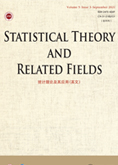Review Articles
scTenifoldNet and scTenifoldKnk: A package suite for single-cell gene regulatory network construction, comparison, and perturbation analysis
Yan Zhong ,
KLATASDS-MOE, School of Statistics, East China Normal University, Shanghai, People's Republic of China
 yzhong@fem.ecnu.edu.cn
yzhong@fem.ecnu.edu.cn
Daniel Osorio ,
QIAGEN Digital Insights, USA

Guanxun Li ,
Department of Statistics, Beijing Normal University at Zhuhai, Zhuhai, People's Republic of China

Qian Xu ,
Department of Veterinary Integrative Biosciences, Texas A&M University, College Station, TX, USA

Yongjian Yang ,
Department of Electrical and Computer Engineering, Texas A&M University, College Station, TX, USA

Jianhua Z. Huang ,
School of Data Science, Chinese University of Hong Kong, Shenzhen (CUHK-Shenzhen), Shenzhen, People's Republic of China

James J. Cai
Department of Veterinary Integrative Biosciences, Texas A&M University, College Station, TX, USA;e Department of Electrical and Computer Engineering, Texas A&M University, College Station, TX, USA

Pages |
Received 10 Mar. 2025,
Accepted 22 Aug. 2025,
Published online: 29 Sep. 2025,









 yzhong@fem.ecnu.edu.cn
yzhong@fem.ecnu.edu.cn




 loading......
loading......